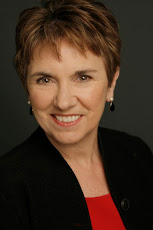
In 1978, a year after she left the White House and at the time of her 60th birthday, the wife of President Gerald Ford, Betty Ford, found that her drinking and use of prescription pain medications had drastically increased. Soon after that she was the recipient of a newly recognized therapeutic process called ‘intervention.’ Her family united from a position of love to confront her about her drinking and drug use and insist she seek treatment. After an initially angry response, she admitted herself to the Long Beach Naval Hospital’s drug and alcohol rehabilitation program. There the former First Lady found herself not only having to share a room with other women, but perform humble tasks like cleaning restrooms and participating in emotionally revelatory therapy sessions with five other women patients there at the same time. Rather than seek to obfuscate the true reasons for her hospitalization or to treat it with shame, Betty Ford decided to fully disclose the details of her addiction and treatment.
Feeling passionate about the possibilities of recovery, she opened the Betty Ford Center in Palm Springs, California. The center was dedicated on October 3, 1982 and today offers gender specific treatment to women. This was not available to women just a few years previously. Betty told her story in the book A Glad Awakening, Doubleday 1987, and was a true pioneer in advocating for women and the possibility of recovery.
Today we know that:
- Female substance abusers metabolize alcohol less efficiently than men, a difference that leads to higher blood alcohol concentrations over a shorter period of time.
- Pound for pound women get drunk or high faster than men as each drink hits a woman like a double. The female body contains less water and more fatty tissue which increases alcohol absorption. Women have a lower activity level of an enzyme called alcohol dehydrogenase which breaks down alcohol.
- Women move through the progression more quickly having a more rapid development of dependence.
- Women experience adverse physiological effects of alcohol on the liver, cardiovascular and gastrointestinal systems more quickly than men. This is called telescoping.
- Women become addicted to narcotics faster than men.
- Women are more likely than males to be hospitalized due to non-medical use of prescription and over the counter medications.
- Women are less likely to ask for and/or receive help.
- Women are more apt to die at younger ages than men who are addicted.
Addiction is a terminal illness; people literally die from it, be it from overdoses, toxicity, or accidents. But prior to the physical death is the emotional death, the relational deaths, the spiritual deaths. Yet I know of no other terminal illness more treatable than addiction.
Betty Ford’s life was celebrated just a few weeks ago as she was laid to rest at the age of 92. Her recovery is a major legacy that will continue to impact both women and men.
Yet it is with great sadness that the public is quickly confronted with the fact that many who are addicted will die before they can embrace recovery as we just saw with Amy Winehouse, the well known English singer/songwriter dead at only 27. As I write this, others less publicly known, are also dying daily of this horrific disease of addiction.
Don’t stay silent – let those you know who are in trouble that while you love them you cannot condone, or in any way support their addictive behavior. You will support them in recovery but not in their disease.
